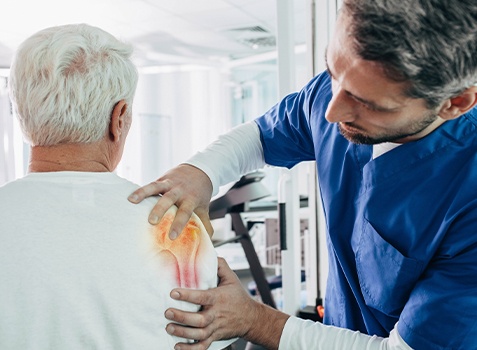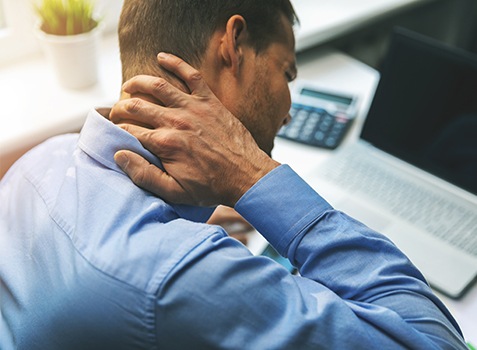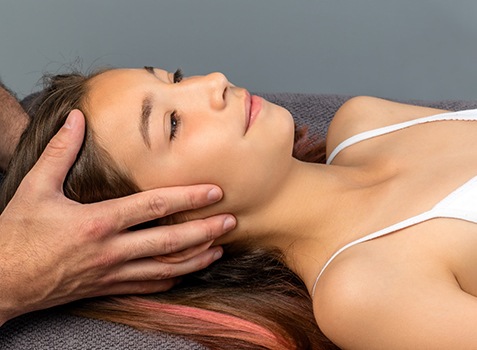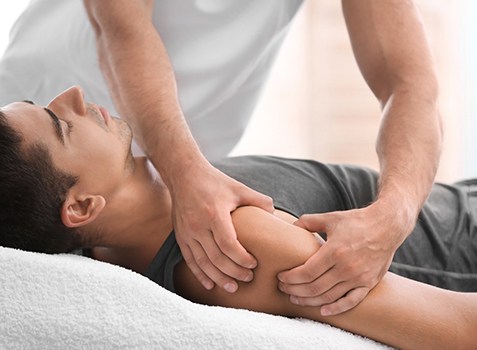Osteopathic Manipulative Treatment - St. Cloud, FL
Bring Balance Back to Your Body

Osteopathic manipulative treatment (OMT) is a method that involves moving the body in specific ways to relieve chronic pain and stimulate healing. With it, Dr. Derek Murphy can often solve longstanding problems simply by guiding the joints and limbs in ways that restore their natural balance and harmony. It’s been shown to successfully treat a wide array of conditions and offers a non-invasive approach that doesn’t involve surgery or medication. Dr. Murphy has already used it to help countless patients feel like themselves again, and he’s ready to do the same for you. Contact us today to get started with osteopathic manipulative treatment in St. Cloud, FL.
Why Choose Holistic Medicine Wellness Center for Osteopathic Manipulative Treatment?
- Gentle, Science-Backed Method for Relieving Chronic Pain
- Provided by Certified Doctor of Osteopathic Medicine
- Able to Help with Back, Neck, Hip, & Head Pain
What Is Osteopathic Manipulative Treatment?

If you were to watch Dr. Murphy use OMT on a patient, it would likely look very familiar to you. Visually, it often resembles a physical therapist or trainer helping someone stretch. This hands-on treatment involves Dr. Murphy gently manipulating parts of the patient’s body to guide the muscles and tissues in a way that increases blood flow and encourages healing. This involves applying a number of techniques that relax the muscles, release restricted joints, and use slight pressure and resistance to take the strain off of overworked or injured tissues.
Osteopathic Manipulative Treatment for Pain Relief

OMT can be used to relieve many types of chronic pain, but it is especially effective for people dealing with an injury that stems from chronic misuse of the joints and muscles (like back and neck pain that comes from someone having poor posture). It can also help those with an acute injury, whether due to sports or an accident. Chronic headaches and orofacial pain related to the TMJ (the temporomandibular joint, or main jaw joint) can be directly addressed with OMT as well. This approach also allows Dr. Murphy to help patients discover areas of tension they may not have noticed before, allowing them to change their behavior to avoid a more serious condition down the line.
Cranial Osteopathy

Cranial osteopathy follows the same principles as general osteopathic manipulative treatment. However, it focuses primarily on the head, neck, and spine. Gentle, precise massages can encourage proper fluid flow in these areas, helping patients to enjoy improved health. Some issues that cranial osteopathy can be used to treat include headaches, migraines, tension, poor sleep, tinnitus, and anxiety. Many patients notice a marked improvement in their symptoms after just one cranial osteopathy session.
Learn More About Cranial Osteopathy
Myofascial Release

Your myofascial tissues support and surround the muscles throughout your body. They contain trigger points. When those trigger points are stiff and inflexible, it can result in muscle pain, headaches, and other symptoms. Myofascial release is a type of massage therapy that helps those trigger points to relax and regain their pliability, resulting in a reduction in pain and an overall healthier body. Myofascial release may be able to relieve myofascial pain syndrome, low back pain, symptoms of carpal tunnel syndrome, and other conditions.
Learn More About Myofascial Release
Muscle Energy

Muscle Energy, also known as Muscle Energy Technique, is a form of osteopathic manipulative treatment that utilizes a patient’s voluntary muscle contractions. After a thorough evaluation, you will be placed in a specific position and asked to contract your muscles, often while gently resisting a barrier. This technique encourages the relaxation of stiff, hypomobile joints and muscles. It is often able to produce quick pain relief, a reduction in muscle spasms, and a noticeable improvement in mobility.
Learn More About Muscle Energy
Osteopathic Manipulative Treatment FAQs

Dr. Murphy and our team are ready to help you discover the pain relief and increased mobility that can result from osteopathic manipulative treatment. Before you schedule a consultation, though, you may want to learn more about what to expect from OMT. Below, you will find answers to some FAQs about this therapy. If you do not see your specific questions addressed, contact our team so we can directly assist you.
Who Is a Good Candidate for Osteopathic Manipulative Treatment?
OMT can be an excellent choice for anyone who is suffering from various types of musculoskeletal discomfort. For example, it can help with headaches, muscle pain, sports injuries, sciatica, and more.
This form of treatment can benefit people of virtually any age or background. Whether you are an athlete who is hoping to gain an edge, a senior citizen looking to find relief from aching joints, or a pregnant person struggling to cope with back pain, OMT might be right for you. It has even been known to help small children and infants.
The best way to find out if OMT is appropriate in your case is to schedule a consultation with our team.
What Is the Difference between Chiropractic, Physical Therapy, and Osteopathic Manipulative Treatment?
Chiropractic uses force to adjust the spine, which in turn can provide whole-body benefits. Physical therapy has more of an emphasis on ongoing exercises that can strengthen the body and help it recover from injury or cope with chronic conditions.
OMT is slightly different. For one thing, it is performed by an osteopath, a physician who has completed medical school and is qualified to treat a wide range of ailments that can afflict the human body. Chiropractors are a quite different type of doctor, and physical therapists do not always have a doctorate degree. Another thing to keep in mind is that OMT looks at the body as a whole and considers how everything is interconnected.
Of course, all three forms of therapy have their benefits. The one that is best for you will depend on the specifics of your unique situation.
How Many OMT Sessions Will I Need?
Some patients notice an improvement in their symptoms after their first session with Dr. Murphy. More often, though, several visits to our office are necessary before optimum relief occurs. During your initial consultation, we should be able to estimate how many sessions you will need to achieve your goals.
Is OMT Painful?
In most cases, no, OMT is not painful. You may feel a relaxed or tingling sensation during your sessions. In some instances, you might not feel anything at all! Of course, there are some instances where patients experience muscle soreness or other forms of discomfort as a result of their OMT sessions.
There is also the possibility that your symptoms will temporarily worsen at the outset of your treatment. That is usually no cause for concern. If you stick to your OMT program, you are still very likely to experience improved wellness and, ultimately, a reduction in pain.
